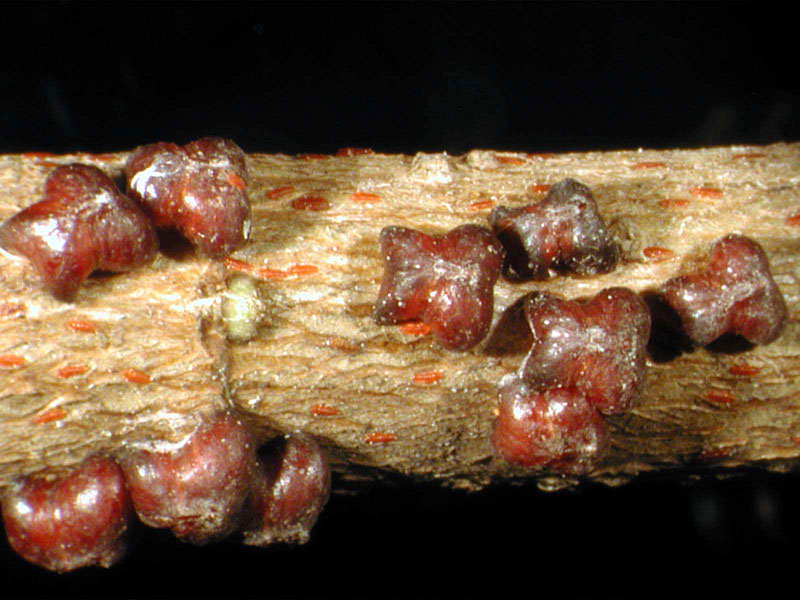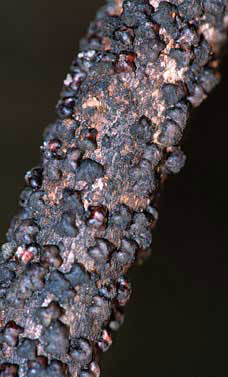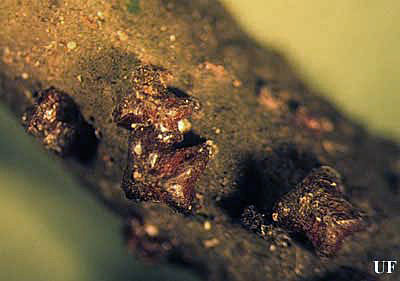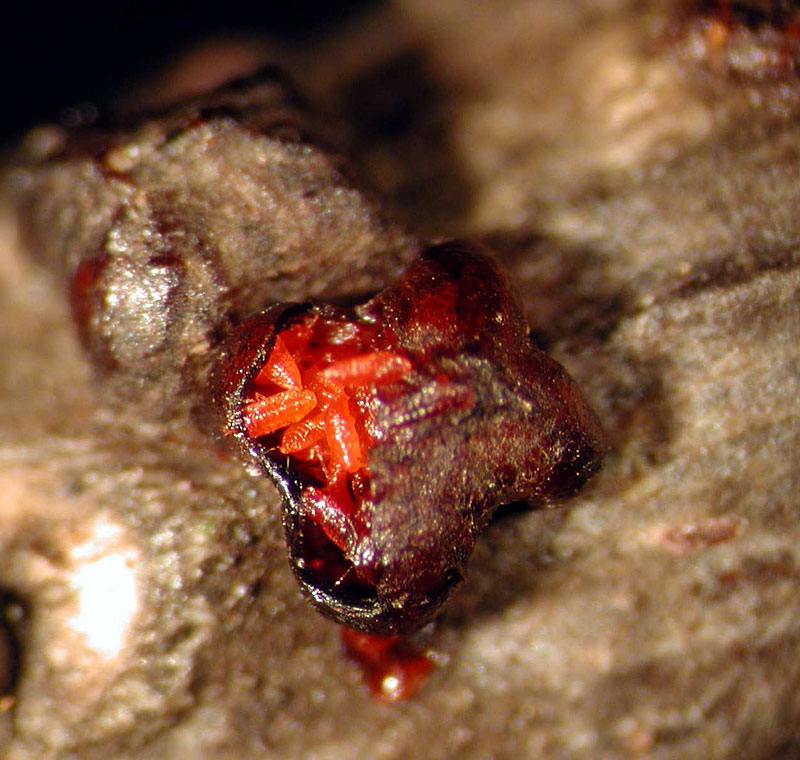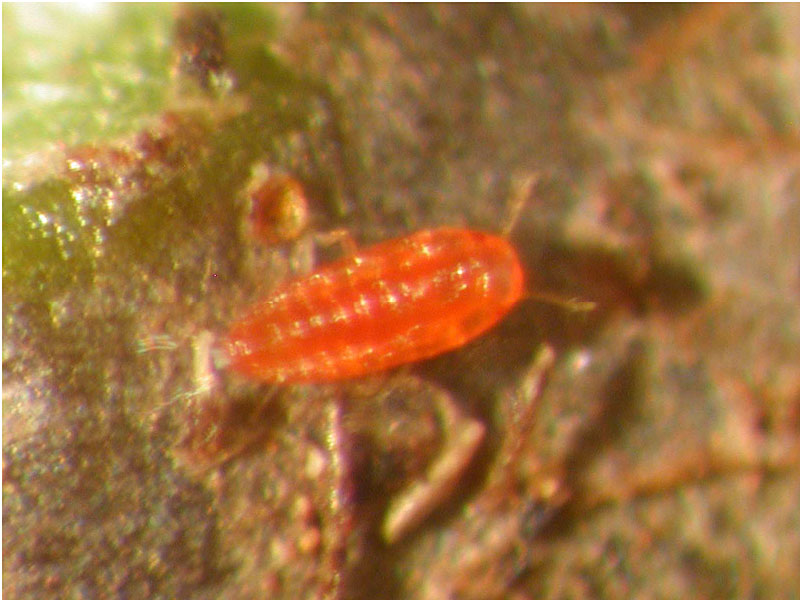Lobate Lac Scale
|
adult females with crawlers; Photo by Holly Glenn, University of Florida |
|
lobate lac scale infestation with sooty mold on wax-myrtle branch; Photo by F.W. Howard, University of Florida |
|
adult females; Photo by F.W. Howard, University of Florida |
|
female covering with larvae exposed; Photo by Holly Glenn, University of Florida |
|
crawler; Photo by Holly Glenn, University of Florida |
Scientific name
Paratachardina pseudolobata Kondo & Gullan
Family
Kerriidae
Synonyms
Occasionally misidentified as Paratachardina lobata Chamberlain, which is morphologically very similar.
Description
The mature female is about 1.5-2 mm in diameter and has a very characteristic x-shaped appearance. The external covering of the insect is very hard and brittle and deep red to maroon in color. They may occasionally appear dull and black due to the growth of sooty mold. The first instarinstar:
stage in an insect's life history between any two molts. The newly hatched insect is the first instar, and the adult (imago) is the final instar.
, known as crawlers, are elongate-oval, red in color, and less than 0.5 mm in length. The second instarinstar:
stage in an insect's life history between any two molts. The newly hatched insect is the first instar, and the adult (imago) is the final instar.
develops the characteristic lobate shape, then presumably molts to the adult form as in other scale insects. Males of the species have not been observed.
Distribution
Confined mostly to the tropics. Native to India and Sri Lanka.
Hosts
Palms: pygmy date palm (Phoenix roebelenii)
Other: primarily woody dicotyledonous plants; highly susceptible hosts include wax-myrtle, cocoplum, buttonwood, various ficus species, red bay, hibiscus, and mango
May be confused with
Crawlers may look similar to cottony cushion scale crawlers, but lack the dark legs. Adult females are very distinctive.
Additional comments
The lobate lac scale is found primarily on the twigs and small branches of the plant, and has not been detected on foliage. Lobate lac scale infestations are usually accompanied by sooty mold, as these scales do produce honeydewhoneydew:
the sticky, sweet secretion produced by sap-feeding bugs
. Ants may also be present.


